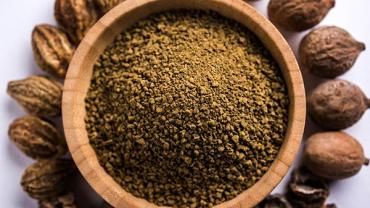
Gastric cancer may not be on the top of the list when we think of malignancies, but it is the fifth most common form of cancer and remains the third leading cause of cancer-related death worldwide, following lung and liver cancer. Its prognosis is rather poor with less than 40 percent of its victims surviving 5 years. Its recurrence rate is even more frightful at nearly 90 percent.
The vast majority of the cancerous lesions are found in the antrum and body of the stomach. Chronic gastritis, triggered by Helicobacter pylori, is thought to be one of the predominant underlying causes of the development of gastric cancer as it paves the pathway to atrophic gastritis, intestinal metaplasia, dysplasia, and eventually gastric cancer. Therefore, identifying and eradicating H. pylori is an important step for both prevention and intervention. Current treatment options are limited to the most conventional – surgical resection, radiotherapy, and chemotherapy – and unfortunately, they have not proven to be very successful in improving the survival rate.
Triphala is a unique botanical that, along with conventional therapy, may have a significant place in the management of gastric cancer. It is a polyherbal botanical commonly used in Ayurvedic medicine for gastrointestinal conditions, promoting efficient digestion, absorption, elimination, and rejuvenation, and has also been used as a colon cleanser, diuretic, and laxative. It consists of equal proportions of the dried fruits of three plant species – Emblica officinalis (Family Euphorbiaceae), Terminalia bellerica (Family Combretaceae), and Terminalia chebula (Family Combretaceae) – that are native to the Indian subcontinent. The fruits themselves are Amalaki or the Indian Gooseberry, Bibhitaki, and Haritaki, respectively.
Triphala has been used as an adjunctive therapy against numerous types of cancers; therefore, a recent in vitro study using fish cell lines, published in 2018, sought to investigate the effects of Triphala against tumor growth and the migration of human gastric cancer cells in a zebrafish xenograft model. Human gastric tumor MGC-803 cells were incubated with 0, 50, 100, and 150 μg/mL Triphala extract for 48 hours after which tumor growth and metastasis were observed and imaged using a fluorescence inverted microscope. Compared to the control group, Triphala-treated fish bodies expressed a declining fluorescence intensity that positively correlated with the increasing Triphala dose. Additionally, decreasing metastatic incidences in tumor-bearing zebrafish were detected with rising concentration of Triphala, evidenced by the results of the Transwell migration assay illustrating that Triphala could significantly reduce the migratory capability of MGC-803 cells.
It is not known whether these in vitro outcomes would translate in vivo in humans. However, the study indicated that the mechanism of action may be related to Triphala’s ability to modulate the epidermal growth factor receptor (EGFR) signaling cascade which plays a significant role in the proliferation and migration of cancer cells.
In addition, Triphala may be useful in addressing H. Pylori, the purported causative agent of many cases of gastric cancer. In another study examining the antibacterial activity of Teminalia chebula, one of the constituents of Triphala, it was discovered that ether, alcoholic and water extracts of Teminalia chebula showed significant antibacterial activity with a minimum inhibitory concentration (MIC) and minimum bacteriocidal concentration (MBC) of 125 and 150 mg/l, respectively. Triphala contains polyphenols that are capable of modulating the human gut microbiome to promote the growth of beneficial Bifidobacteria and Lactobacillus species.
Finally, Triphala has also been studied for its anti-inflammatory and immunomodulating properties, which are also active in the pathogenesis of cancer. In one rat study, Triphala reduced expression of inflammatory mediators such as IL-17, COX-2, and RANKL through inhibition of NF-κB activation. In a study using an arthritic rat model, lipopolysaccharide-stimulated macrophages, Triphala suppressed the production of inflammatory mediators (such as TNFα, IL-1β, IL-6, MCP-1, VEGF, NO, and PGE2), intracellular free radicals, inflammatory enzymes (such as iNOS and COX-2), and lysosomal enzyme release.
Triphala seems to be a unique botanical with therapeutic potential for helping to both prevent and manage gastric cancer, along with conventional therapy. Emerging research in animals suggests that Triphala may act directly on cell proliferation and migration, but its antimicrobial, anti-inflammatory, and antioxidant activities target multiple pathways that lead up to the development and progression of cancer.